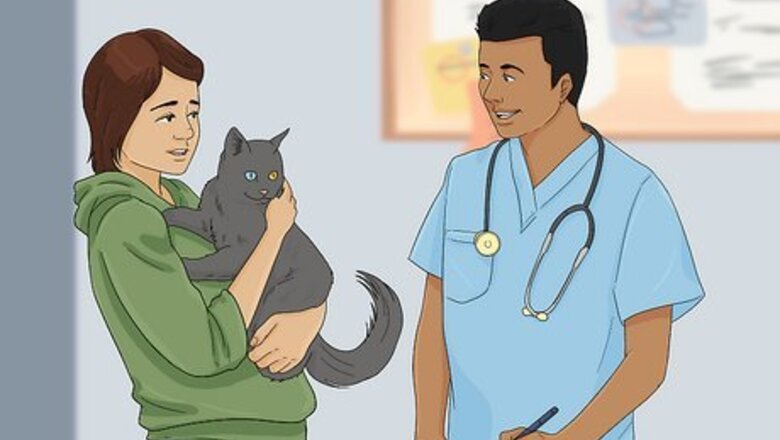
views
Preventing Your Cat from Urinating on the Carpet

Take your cat to see a veterinarian. A medical issue, such as a urinary tract infection, may be causing your cat to urinate on the carpet instead of in a litter box. Before you try any other intervention to remedy the situation, you should take your cat to see a veterinarian to treat any medical issues that may be causing the behavior. Getting your cat checked out right away is important to protect the health and well-being of your pet and to prevent a long-lasting litter box aversion. Squatting for long periods of time, blood in the urine, frequent urination and meowing while trying to urinate are all signs that your pet might have a bladder or urinary tract issue or infection. These health problems can cause litter box avoidance. Inappropriate urinations can be a medical condition and with male cats can actually be an early sign of a life-threatening blockage.
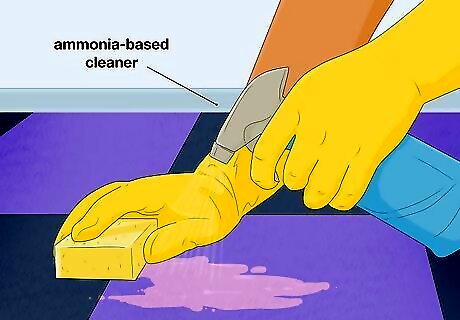
Clean accidents with an enzymatic cleaner. Cleaning up accidents right after they happen will also help deter your cat from using the same spot again. Use an enzymatic cleaner rather than an ammonia based one. Ammonia-based cleaners may cause your cat to urinate more often on the spot because she may interpret the ammonia as another cat’s urine that she must cover up with her own urine. Consider having your carpets cleaned professionally if they are heavily soiled. Some rugs may be beyond cleaning if the messes were not taken care of right away. Get rid of rugs that have been soiled repeatedly by your cat.
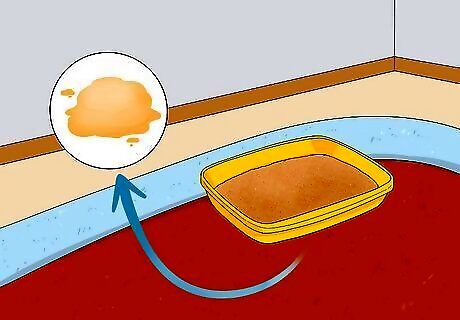
Place a litter box over the spot on the rug where your cat likes to urinate. If your cat has started going to the bathroom on a rug or carpet, place a litter box over that spot to encourage her to use the box instead. After she has used the box for one month, move it an inch per day until it is back where you want it to be.
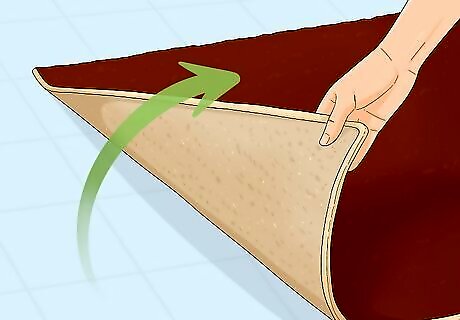
Flip carpet runners and area rugs upside down. Cats may develop a preference for a specific rug and begin using it as a bathroom. Turning over rugs and carpet runners may discourage your cat by changing the texture of the surface. Try flipping over your rugs and carpets for a few days to see if that stops your cat from urinating on them.
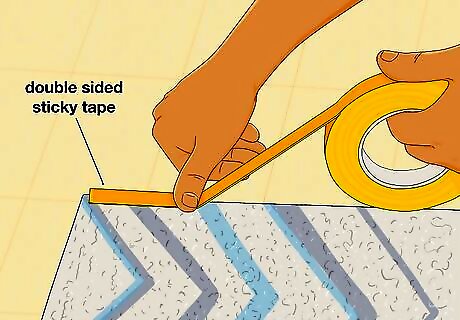
Apply double sided sticky tape to edges of rugs. Sticky tape can discourage a cat from urinating on a rug because the sensation of the tape on its paws is unpleasant. Try applying double sided sticky tape to the edges of area rugs as well as over the spot where your cat likes to urinate.
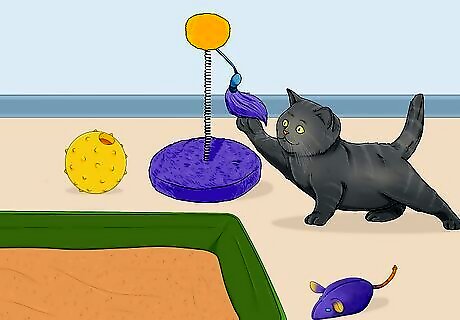
Play with your cat around her box. Your cat may be urinating on the carpet because she has developed a negative association with using the litter box. Negative associations with the litter box may be improved by doing things like playing with your cat around the litter box. Try playing with your cat a few feet away from her box a few times per day to help her generate more positive feelings about the litter box. Do not try to reward your cat for using the litter box by giving her treats. Cats don’t like to be disturbed while they use the litter box. You can leave treats and toys near your cat’s litter box, but do not keep your cat’s food and water dish next to her box. Cats don’t like to eat too close to where they use the bathroom.

Talk to your veterinarian again if things don’t improve. Encouraging your cat to use the litter box takes time and effort, but it may not always be successful. Some veterinarians undergo special training to help people deal with problems such as urinating outside of the box. If your cat does not improve over time, consider speaking to a Certified Applied Animal Behaviorist or a board-certified veterinary behaviorist.
Understanding Common Litter Box Problems
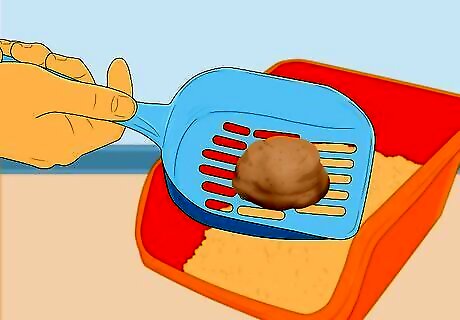
Consider how often you clean the litter box. Cats do not like to use a dirty litter box and they may begin going to the bathroom elsewhere if their litter box is dirty when they need to go. If you are not cleaning your cat’s litter box every day, this may be the reason that your cat is urinating on the carpet. In addition to scooping out your cat’s litter box every day, once per week you should also remove all the litter and clean the box with warm water and unscented soap or baking soda. When you are finished, dry the box and add fresh litter. Try a self-cleaning litter box to make it easier to keep your cat’s litter box clean.
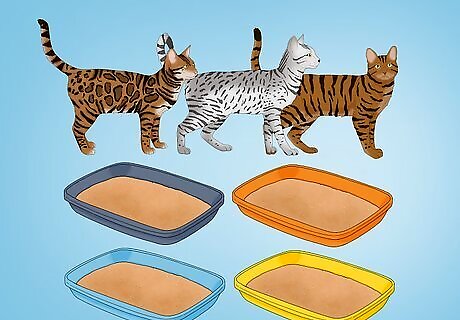
Make sure that you have enough litter boxes in your house. It is important to have one more box than the number of cats in your household. For example, if you have three cats, then you should have four litter boxes. If you only have two litter boxes and you have three cats, then the number of litter boxes may be the reason why your cat is urinating on the carpet.
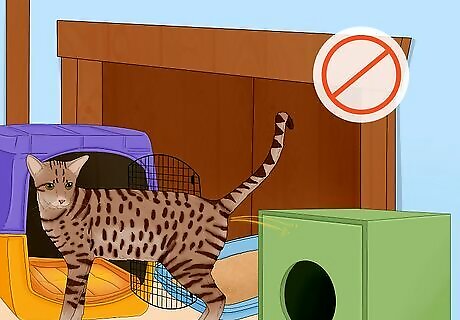
Determine if your cat can access the litter box with ease. If your cat has to make a long trip to get to her litter box or if the litter box itself is difficult for your cat to get into and out of, that might be the reason why your cat is urinating on the carpet. Place your cat’s litter boxes where it is easy for her to get to them in a hurry, such as one upstairs and one downstairs. Make sure that your cat will be able to see approaching humans or animals and easily get away. Cats don’t like to feel cornered Attend to the needs of older cats by providing boxes with lower sides, for easier entrance and exit to the litter box. Place litter boxes near or over where your cat tends to urinate on the carpet.
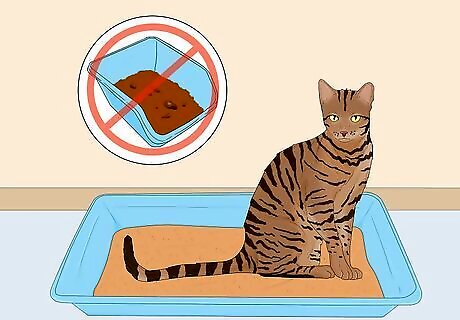
Find out if the litter you use is causing the problem. Cats may avoid using the litter box because they dislike the smell or texture of the litter, or because the litter is too deep. A shallow bed of medium to fine grain clumping litter is best, but you can also try offering your cat different types of litter to see what she prefers. Give your cat a choice of litter types by placing two litter boxes with two different types of litter right next to each other. At the end of the day, check to see which one your cat used. Provide a shallow bed of litter. Most cats prefer a litter box that has about 1–2 inches (3–5 cm) of litter.
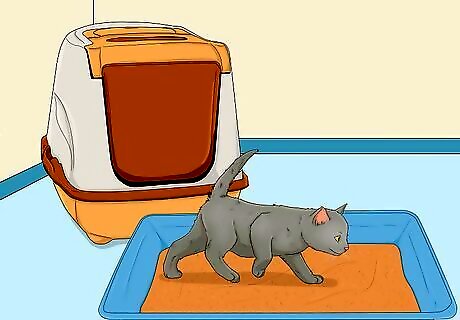
Determine if the style of the litter box may be causing your cat discomfort. Some cats avoid using a litter box because they don’t like the size or shape of it. Often, cats prefer open litter boxes instead of hooded ones. Liners on a litter box may also be causing discomfort, so you can try removing those as well. Consider the size of your cat’s litter box as well. If it is too small for her, then she may avoid using it. Cats likely feel about hooded litter boxes the same way we feel about porta potties—they're serviceable, but less than ideal.
Considering Possible Health and Behavior Problems
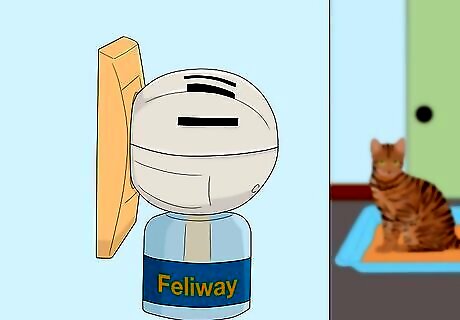
Decide if stress is causing your cat to urinate on the carpet. Other pets, children, or a noisy environment can all cause your cat to feel stressed and avoid the litter box. Make sure that your cat’s litter box is kept in a place that is semi-dark, quiet, and secluded. If your cat’s box is in a high traffic area, she will be less likely to use it. Try using Feliway diffusers to help your cat feel more relaxed. This product releases a scent that some cats find comforting.
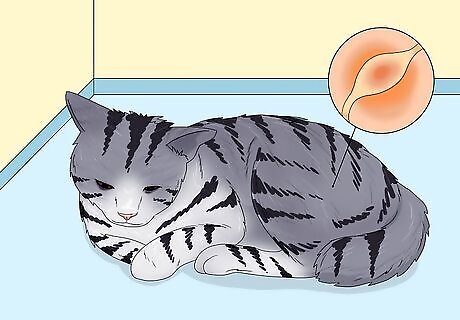
Consider your cat’s current or past medical conditions. Your cat’s medical history may provide an explanation for why your cat has not been using the litter box. If you suspect that your cat is sick, take her to see a vet as soon as possible. Early treatment of an illness by help stop litter box problems as well as save your cat from pain and discomfort. Urinary tract infections and feline interstitial cystitis are common conditions that may cause your cat to urinate on the carpet. Urinary tract infections may cause a cat to avoid the litter box, even after the infection has been treated. Your cat may still associate the litter box with pain and want to avoid it. Feline interstitial cystitis is another common cause of litter box aversion. Cats with feline interstitial cystitis may urinate in the litter box because they feel the need to urinate more often. Kidney stones or a blockage of your cat’s urinary tract may also result in a litter box aversion. Your cat may meow or howl while using the box and the fear of pain may continue even after treatment. Keep in mind that prompt treatment of these conditions is essential so that your cat does not develop a long lasting litter box aversion.
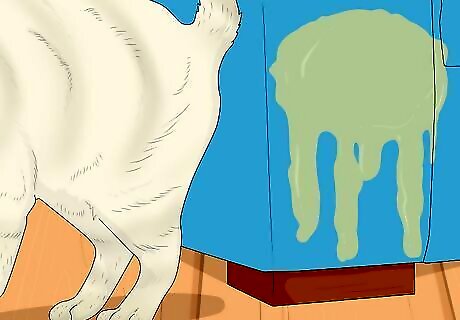
Figure out if urine marking is the cause of your cat’s litter box problems. Urine marking is when your cat sprays a bit of urine on a piece of furniture or other surface to mark her territory. The amount of urine is much less than a cat will eliminate when urinating. If your cat is displaying this type of behavior, many of the suggestions in this article will be helpful, but there are additional things that you will need to do to help stop your cat from urine marking. Urine marking is most common in unneutered male cats but unspayed female cats may also exhibit this behavior, so it is important to have your cats spayed and neutered. Urine marking is also common in households with more than ten cats, so keeping the number of cats in your home below ten can also help with this problem.



















Comments
0 comment